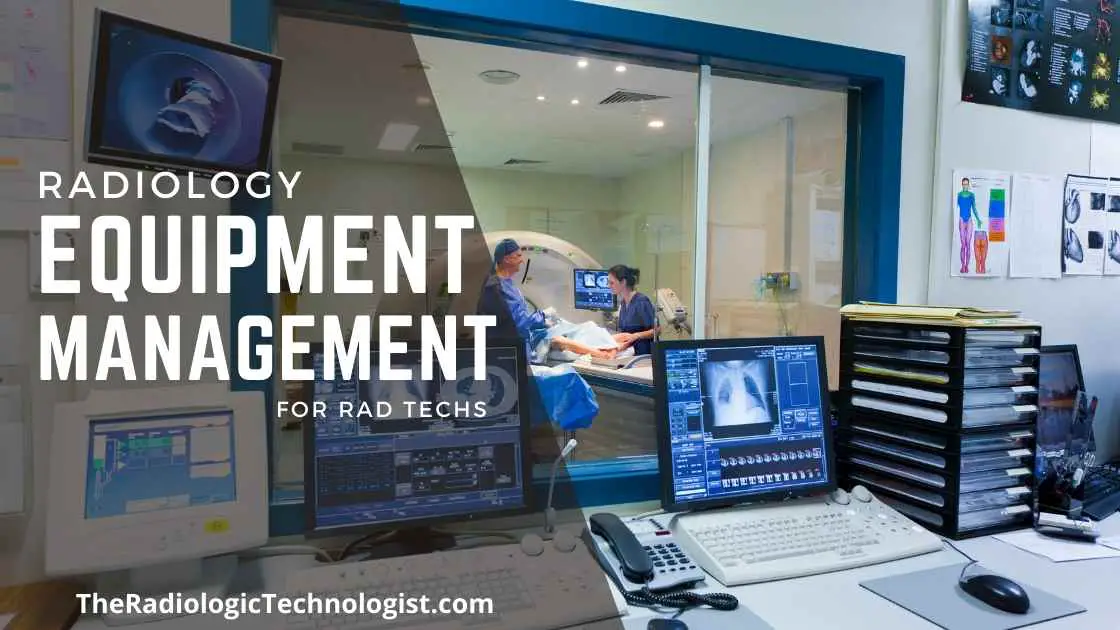Many medical professionals are unfamiliar with the intricacies of radiology equipment management, and this lack of knowledge can create hazardous situations for employees and patients.
Medical imaging professionals must be aware of the various types of radiation exposure, know how to clean and maintain equipment, and have a secure storage plan in place for all equipment.
This blog post will cover these topics in-depth and provide tips for creating a safe and effective imaging environment.
By following these guidelines, you will protect yourself and the patients who receive your imaging services.
What Is Radiology Equipment Management?
Radiology equipment management is the process of ensuring that all radiology equipment is adequately maintained and operated.
This includes everything from making sure the equipment is correctly calibrated to ensuring that it is regularly serviced and repaired.
One of the essential aspects of radiology equipment management is ensuring that the equipment is calibrated correctly.
This helps to ensure that the images produced by the equipment are accurate and of high quality.
Regular checks must be carried out to calibrate the equipment to ensure it functions correctly. This can be done by technologists and engineers.
Another critical aspect of radiology equipment management is ensuring the equipment is regularly serviced and repaired. This part is the engineers.
This helps prevent equipment problems and ensures that it continues to function correctly.
Servicing and repair work should only be carried out by qualified personnel.
Call an engineer at the first sign of trouble or notify your supervisor.
By following these tips, you can help to ensure that your radiology equipment is adequately maintained and operated. This will help to ensure that you produce high-quality images and avoid any problems with your equipment.
What Are The Benefits Of Radiology Equipment Management?
Radiology equipment management is the process of organizing, maintaining, and repairing radiologic equipment.
This process can have many benefits, including reducing costs, improving safety, and extending the life of radiologic equipment.
Radiology equipment management can help reduce costs by preventing or resolving problems before they occur.
For example, if a piece of equipment is not working correctly, it can be fixed before it breaks down entirely and needs to be replaced. In addition, regular maintenance can help extend the life of radiologic equipment.
Radiology equipment management can also improve safety by ensuring that all equipment is in good working order.
This can help prevent errors and accidents that could injure patients or staff. In addition, well-maintained equipment is more likely to produce high-quality images, leading to better diagnosis and treatment.
What Are The Challenges Of Radiology Equipment Management?
Radiology equipment management can be a challenge for any healthcare facility. There are many factors to consider, such as budget, maintenance, and training.
Budget is always a significant consideration when it comes to radiology equipment. Newer, more advanced machines can be costly, and Healthcare facilities need to weigh the cost of new equipment against the benefits it will provide.
Maintenance is another critical factor to consider. Radiology equipment is subject to wear and tear and needs to be appropriately maintained.
Training is also essential. Radiology technologists must be trained correctly to safely and effectively use the equipment.
Many challenges come with managing radiology equipment.
However, by considering factors such as budget, maintenance, and training, healthcare facilities can overcome these challenges and ensure that their radiology department runs smoothly.
How Can You Overcome The Challenges Of Radiology Equipment Management?
One of the biggest challenges is keeping track of all the different equipment pieces and ensuring they are adequately maintained.
Another challenge is ensuring that the equipment is compatible with other parts of equipment in the hospital or clinic.
One way to overcome these challenges is to have a sound system for tracking and maintaining the equipment.
This system should include regular check-ups and maintenance for all of the different pieces of equipment.
It is also essential to have a compatibility testing strategy to ensure that new pieces of equipment will work well with existing systems.
What Are Some Tips For Successful Radiology Equipment Management?
There are a few essential tips to successfully managing radiology equipment.
First, it is crucial to have a dedicated team or individual responsible for the care and maintenance of the equipment.
This will help ensure that the equipment is appropriately taken care of and that any issues are quickly addressed.
It is also essential to create a preventative maintenance plan for all of the equipment.
This plan should include regular cleaning, inspections, and equipment servicing. Taking proactive measures to maintain the equipment will help to extend its lifespan and keep it running smoothly.
Finally, it is crucial to have a system in place for tracking and responding to any problems with the equipment.
This could include keeping detailed records of all maintenance activities and having a process for reporting and resolving any issues that arise.
Keeping the radiology equipment in good condition will be more accessible by staying organized and on top of potential problems.
Conclusion
Radiology equipment management is crucial for ensuring that imaging equipment is adequately maintained and operated.
There are many benefits to radiology equipment management, including extended equipment life, improved imaging quality, and reduced downtime.
However, some challenges come with radiology equipment management, such as changing technology and regulation, managing costs, and recruiting and retaining skilled personnel.
Radiology equipment management is essential for safe and effective patient care despite the obstacles.
Some crucial tips for successful radiology equipment management include developing a comprehensive management plan, establishing clear priorities, and involving all stakeholders in the process.
With careful planning and execution, radiology equipment management can help ensure that imaging equipment is adequately maintained and operated, providing safe and effective patient care.

